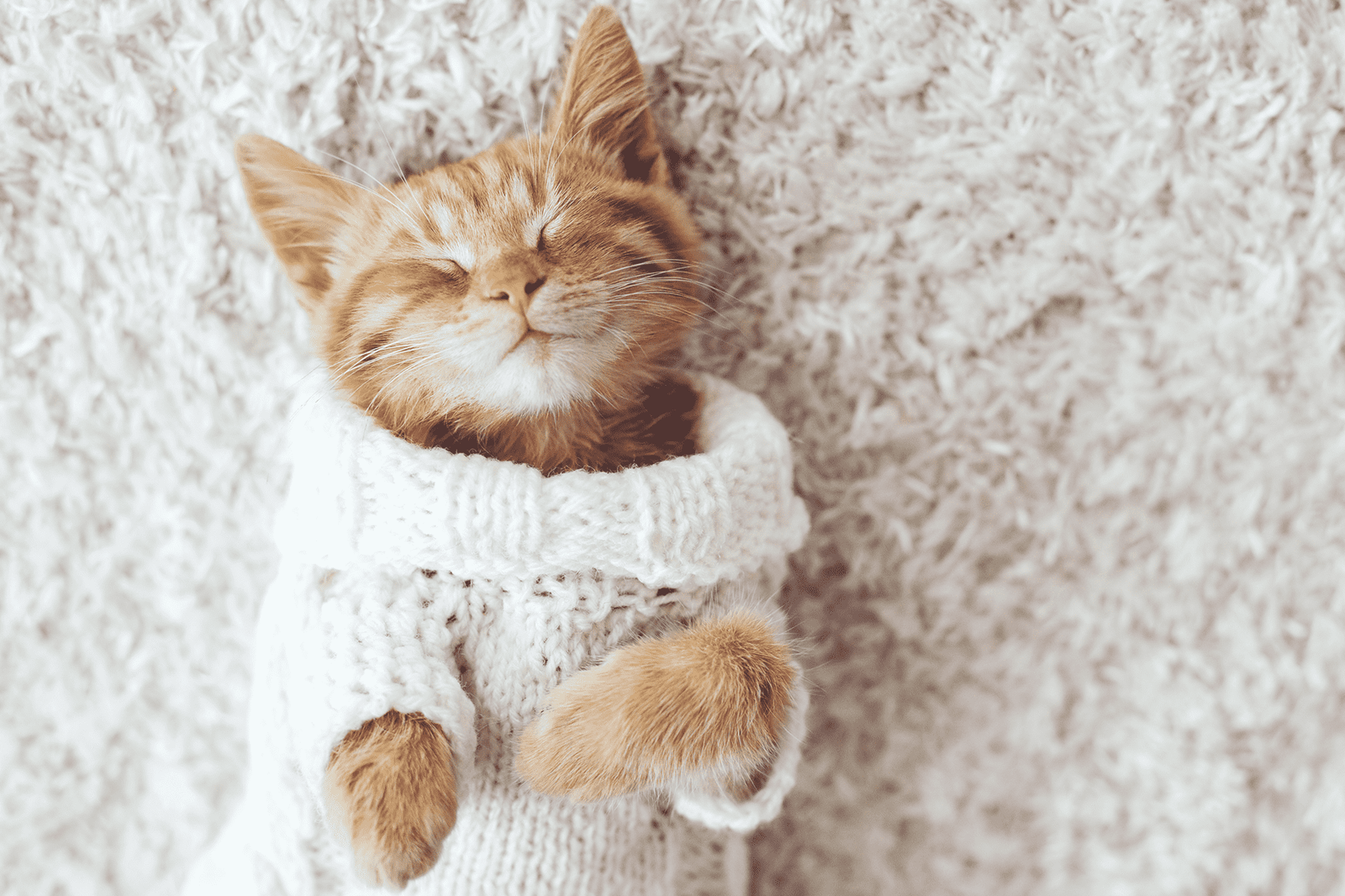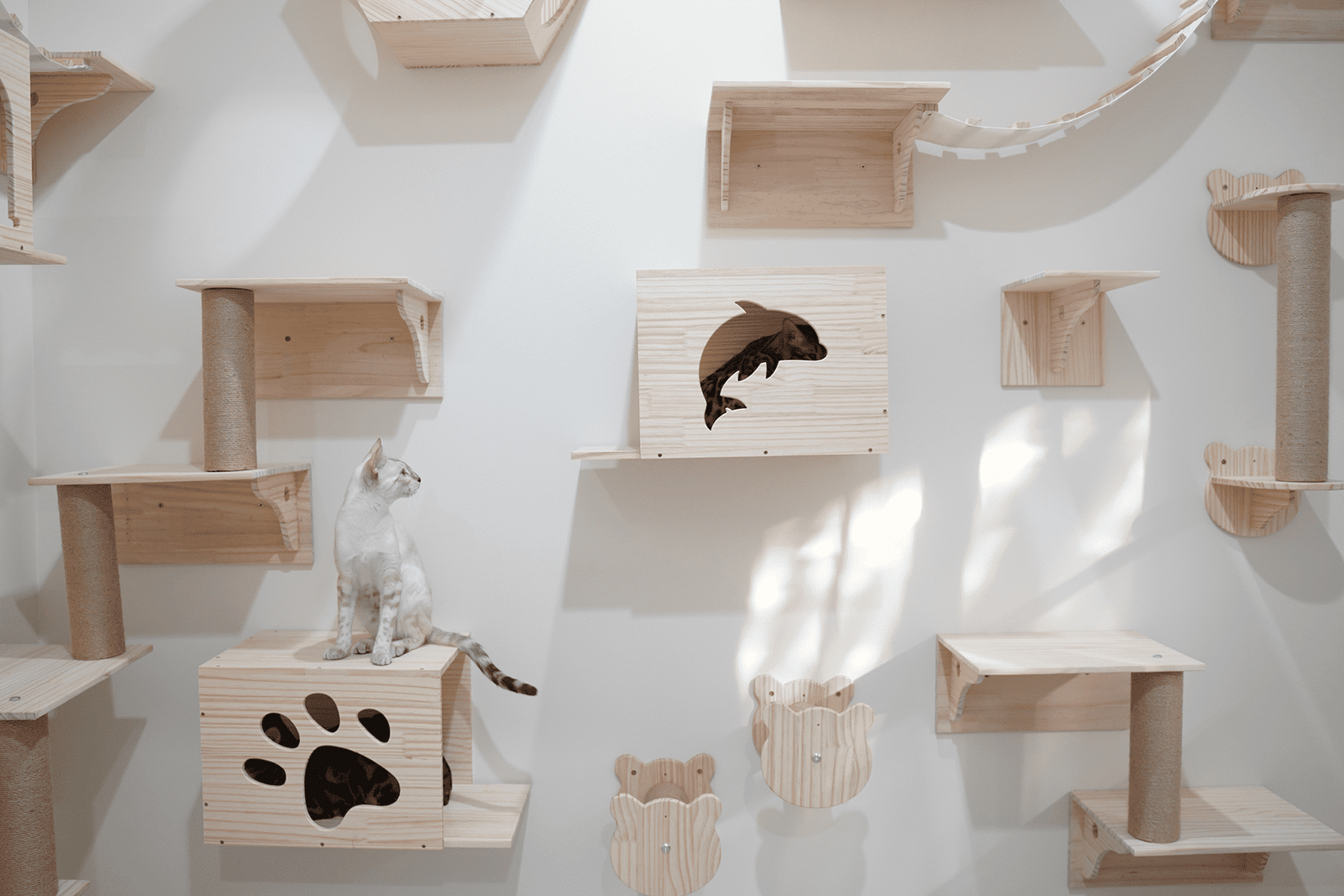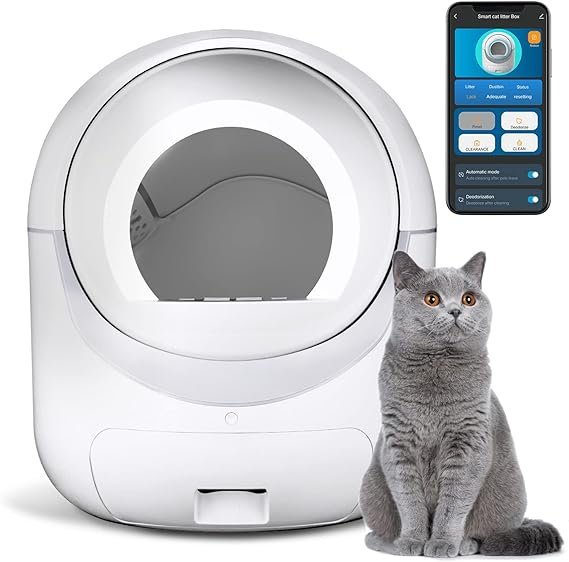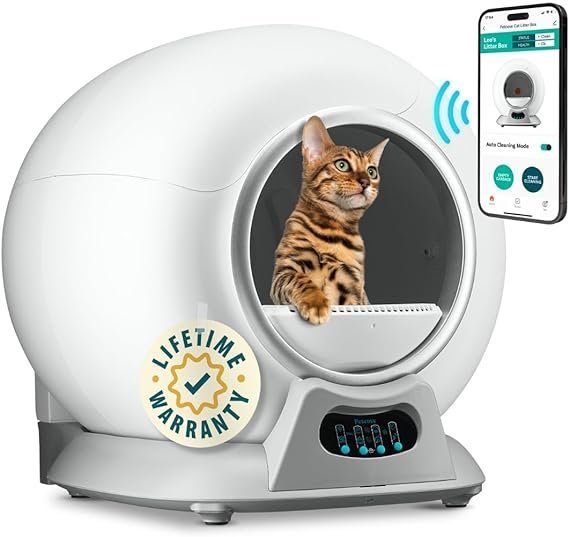Choosing the Right Litter Material
When selecting a litter material for your cat, you’ll need to consider several factors to find the best option. The most common types of cat litter are clumping vs. non-clumping and natural vs. synthetic materials.
Clumping vs. Non-Clumping
- Clumping litters form solid clumps when wet, allowing you to scoop out the soiled areas and leave behind clean litter. This helps control odor and allows you to only replace small amounts of litter at a time. Most cats prefer clumping litter.
- Non-clumping litters require fully changing out the litter more often since urine and feces cannot be scooped out. Some cats dislike the texture of non-clumping varieties. However, non-clumping litters may be better for young kittens who tend to ingest litter.
Natural vs. Synthetic
- Natural litters are typically made from materials like wood, paper, or corn. They are minimally processed and biodegradable. However, some cats dislike the texture and natural litters may track more or produce stronger odors.
- Synthetic litters like clay and silica gel beads are highly absorbent and effective at controlling odors. But some cats are deterred by the unnatural feel and synthetic litters are not environmentally friendly.
Odor Control
Look for a litter that minimizes odors between changes. Clumping and synthetic litters typically offer the best odor control. Scented litters also help combat odors but some cats dislike the artificial fragrance. Activated charcoal or baking soda can absorb odors in natural litters.
Dust Levels
Litters with lots of dust can irritate your cat’s respiratory system and cause sneezing or coughing. Low-dust options include pellet, crystal, and gravel style litters. Also look for low-tracking litters that don’t stick to your cat’s paws.
Tracking
Litters that crumble easily tend to track all over your home. Larger granules, pellets, and crystals track less. If your cat does track litter, place mats near the box to contain the mess.
Litter Box Size and Shape
The size and shape of your cat’s litter box can greatly impact how likely they are to use it consistently. You’ll want to choose a litter box that gives your cat enough room to move around and dig, while still being an appropriate size for their needs.
Appropriate Size
The general rule is that the litter box should be at least 1.5 times the length of your cat. This gives them sufficient room to turn around, squat, bury their waste, and move comfortably in and out of the box. Kittens and smaller cats may only need a small box, while larger cats require extra space.
Oval shaped litter boxes tend to provide more usable space compared to square boxes of the same dimensions. Just make sure the litter box opening aligns with the shape, so your cat doesn’t have trouble getting in and out.
Covered or Uncovered
Covered litter boxes help contain odors and litter scatter inside the box. However, some cats don’t like enclosed spaces and may avoid using a covered litter box.
Kittens and elderly cats may also have trouble with the higher entryway of covered boxes. Make sure the entrance is low enough for easy access.
Uncovered boxes allow for more air circulation and provide an unobstructed entry, which some cats prefer. The smell is more noticeable though.
Litter Box Entry
The most common litter box entry is on the top of the box. Some covered boxes have front access doors as well. Top entry with low sides tends to be the most accessible design.
Kittens, senior cats, and those with mobility issues may benefit from a lower front entrance instead of having to climb over high walls. Just monitor that litter scatter is not excessive.
Material
Traditional litter boxes are made of plastic, though you can also find models in stainless steel and other materials. Plastic is affordable and provides a neutral surface that won’t harbor odors. Some cats prefer stainless steel for its smooth, cleanable surface.
Ultimately, the litter material inside the box matters more than the actual box itself. Focus on finding a box style your cat is comfortable using.
Litter Box Location
When choosing where to place your cat’s litter box, there are a few key factors to consider:
– Away from food and water – Cats don’t like their litter boxes too close to where they eat and drink. Try to place the litter box in a different room, or at least several feet away from their food and water bowls.
– Easy access – Place the litter box somewhere your cat can easily access anytime they need to use it. Avoid placing it up or down stairs, which may deter them from using it.
– Low traffic area – Find a spot that doesn’t get a lot of foot traffic or noise. Cats like privacy when doing their business. Avoid high traffic areas.
– Quiet location – Loud noises may startle cats when using the litter box. Try to find a quiet, peaceful spot in your home, like a spare bathroom, laundry room, or corner of the basement.
The ideal litter box location provides privacy and is quiet, yet still conveniently accessible for your cat. Experiment to find the spot your cat prefers. Just make sure it’s away from their food and water. Proper litter box placement encourages good litter box habits.
Cleaning the Litter Box
Keeping your cat’s litter box clean is essential for your cat’s health and happiness. Here are some tips for effective litter box cleaning:
Scooping Frequency
The litter box should be scooped at least once per day. Scooping daily removes urine and stool, which helps control odors and prevents the buildup of bacteria. Some cats may need their boxes scooped more than once a day, such as after each use or multiple times per day. Observe your cat’s habits and increase scooping frequency if needed.
Full Cleans
In addition to daily scooping, the entire litter box should be emptied, washed, and refilled with fresh litter about once per week. This helps remove any bits of urine or stool that may get missed during scooping. It also prevents the buildup of odors and bacteria over time.
Some cats don’t like sudden changes to their litter box setup. When doing a full clean, reuse some of the old litter mixed with the new to help the litter box smell familiar.
Disinfecting
When doing a full clean, wash the litter box with soap and warm water. An antibacterial cleaner can also be used periodically to disinfect the litter box and kill germs. Avoid harsh chemicals like bleach or ammonia, as these can be overpowering for a cat’s sensitive nose.
Rinse the litter box thoroughly after cleaning to remove any chemical residue. Allow the litter box to dry completely before refilling with litter. This will help keep the litter box clean and healthy for your cat.
Introducing Your Cat to the Litter Box
When bringing home a new kitten or cat, one of the first things you’ll need to do is introduce them to the litter box. This is an important step in litter training your cat and preventing accidents around the house.
Here are some tips for successfully introducing your cat to the litter box:
- Show the location. When first bringing your cat home, immediately show them where the litter box is located. Bring them to the room and set them down in front of the box so they know where to find it.
- Place after meals. Take your cat to the litter box after every meal. Cats will often need to relieve themselves after eating, so prompting them to use the box helps them associate it as the place to go.
- Positive reinforcement. Anytime your cat uses the litter box properly, provide praise and/or a treat as positive reinforcement. You can even place a treat in the box to encourage them to step inside. The more positive experiences your cat has with the litter box, the more likely they’ll continue using it.
Getting your new cat accustomed to their litter box from the start helps avoid household accidents. Be patient, provide prompting when needed, and give lots of praise when they get it right. With time and positive reinforcement, your cat will develop good litter box habits.
Troubleshooting Litter Box Issues
Some common litter box issues include inappropriate urination, not covering waste, and avoiding the box entirely. Here are some tips for troubleshooting:
Inappropriate Urination
If your cat is urinating outside the litter box, there are a few possible causes to consider:
- Medical issues like urinary tract infections or kidney disease can cause changes in urination habits. Have your vet examine your cat to rule out health problems.
- Stress, anxiety, or territorial issues may lead a cat to mark its territory outside the box. Providing additional boxes, keeping the area clean and free of territorial stressors, and using calming aids like pheromone diffusers can help.
- A dirty litter box may deter your cat from using it. Scoop at least once a day and change the litter regularly.
- Your cat may dislike the litter type, box location, or box itself. Experiment with different litters, box styles, and location changes to find what your cat prefers.
Not Covering Waste
If your cat stops burying its waste, possible reasons include:
- Pain, arthritis, or other health issues making it difficult to dig and cover. Have your vet check for underlying physical causes.
- An aversion to the litter substrate. Try different textures like wood pellets or crystal litter to see if your cat prefers burying in a different substrate.
- Anxiety about the litter box location. Place it in a quiet, low-traffic area and experiment with more privacy or multiple box options.
Avoiding the Box Entirely
If your cat avoids the box altogether, it could be caused by:
- An illness causing associating the box with pain. See your vet.
- An unpleasant box location. Cats prefer quiet, private, low-traffic areas.
- A previous bad experience like being ambushed, startled, or trapped. Improve privacy and accessibility.
- A dislike of the litter or box itself. Experiment with different styles and litters.
- Stress from changes, new pets, construction. Use calming aids to ease transition.
With patience and experimentation, most litter box issues can be resolved. If problems persist, consult your veterinarian. Proper litter box habits are important for your cat’s health and happiness.
Special Needs Cats
When choosing a litter and litter box for senior cats, declawed cats, or obese cats, there are some additional factors to consider.
Senior Cats
As cats age, they may develop mobility issues or arthritis that make climbing in and out of a litter box difficult. For senior cats, choose a litter box with low sides or a cut-out entrance to make access easier. Avoid high-sided boxes. Place the box in an easily accessible location on the ground level of your home. Consider getting a larger litter box so your cat has plenty of room to maneuver inside.
Declawed Cats
Declawed cats tend to avoid litter boxes with rough or uncomfortable surfaces that may irritate their paws. Try using a high-quality, extra soft litter that is gentle on sensitive paws. Hooded litter boxes may also be preferred since they contain the litter better. Ramps can be added to provide easier access in and out of covered boxes.
Obese Cats
For obese or large cats, bigger is better when it comes to litter boxes. Look for extra-large boxes that give big cats enough interior space to turn around and move comfortably. Cut-out openings allow easier entrance and exit without squeezing. Place boxes in quiet, low-traffic areas, since obese cats may not be able to move quickly out of the way. Avoid covered boxes, which may make an obese cat feel confined. Longer boxes may work better than square boxes to give them more room.
With some adaptive measures like choosing an accessible box, appropriate litter, and ideal location, even cats with special needs can easily use the litter box. Work with your veterinarian to determine any additional accommodations needed for senior, declawed, or obese cats.
Automatic Litter Boxes
Automatic litter boxes provide a convenient option for cat owners by automating the cleaning of the litter box. They work by either continuously raking through the litter to remove waste or fully spinning/cycling the litter at regular intervals.
There are several types of self-cleaning litter boxes available:
- Raking boxes have a comb or rake that moves through the litter, sifting out clumps of waste into a closed receptacle. This allows clean litter to remain in the main box while waste is isolated. Raking boxes need some maintenance like changing waste receptacles and occasionally replacing litter.
- Cycling boxes fully rotate the litter chamber to strain and separate waste clumps which fall through a grate into a drawer or compartment beneath the box. The clean litter remains behind. These totally hands-off boxes cycle through all litter continually.
- Self-washing boxes utilize water to flush and wash away waste after each use. They resemble a toilet and flush into a closed system but require plumbing and frequent litter replacement.
The benefits of automatic litter boxes include:
- Convenience – No daily scooping required.
- Odor control – Waste is quickly removed or isolated from clean litter.
- Consistent cleaning – The box doesn’t rely on a person remembering to scoop.
- Larger capacity – Some boxes hold more litter, allowing longer intervals between full litter changes.
Potential drawbacks include:
- Higher cost – Automatic boxes cost notably more than standard litter boxes.
- Added complexity – More moving parts mean more potential issues and maintenance needs.
- Larger footprint – Automated cleaning systems take up more space.
- Transition time – Some cats may resist a switch to an automatic box.
For hands-free waste removal and odor control, automated litter boxes can be an excellent option for many cat owners. The variety of models means shoppers can find the right balance of convenience and simplicity for their needs and budget.
Litter Box Health and Safety
Proper litter box hygiene is essential for your cat’s health. Here are some key considerations:
Respiratory Issues
Dirty litter boxes release ammonia, which can cause upper respiratory infections in cats. Scoop feces daily and change the litter completely every 1-2 weeks to prevent ammonia buildup. Also use litter that clumps well and has odor control. Unscented litter is ideal as perfumed litters can further irritate your cat’s respiratory system.
Keep the litter box in a well-ventilated area of your home. Place it away from your cat’s food and water bowls to avoid contamination. Open windows regularly and use air filters to keep the air fresh. Monitor your cat for any respiratory symptoms like sneezing, coughing or eye/nose discharge. See your vet promptly if these occur as respiratory infections can advance quickly in cats.
Litter Tracking
Cats can track litter stuck between their paws throughout your home. This poses cleanliness and health issues if they trek germ-laden litter onto kitchen counters or beds.
Choose a litter box with lower sides so it’s easier for your cat to keep litter inside. Hooded boxes also help minimize tracking. Place a mat under and around the litter box to catch scattered litter. Use a thicker, heavier litter that doesn’t stick to paws as easily. And sweep or vacuum around the box daily.
Parasite Prevention
Changing litter frequently helps remove parasite eggs like toxoplasmosis that can infect your cat if ingested. Deep clean the litter box with soap and hot water weekly to remove any remaining organisms. Keep your cat indoors so they don’t pick up parasites by hunting mice or other prey outside.
Wash your hands after cleaning the litter box to prevent human exposure to toxoplasmosis. Pregnant women should avoid cleaning litter boxes. Overall, maintaining clean litter habits is key to reducing parasitic infections that can spread between pets and people.
Choosing the Best Litter and Box
When choosing the best litter and litter box for your cat, there are a few key factors to consider:
Budget
Litter and litter boxes can range greatly in price. Cheaper clay and clumping litters usually cost between $5-15 for a large bag, while premium litters like crystalline silica beads or plant-based pellets can cost $20-30. Budget-friendly litter boxes made of plastic run from $10-25, while covered, hooded, and automated boxes can cost anywhere from $50 up to $500 or more.
Consider how much you can invest upfront, but also costs over time. Buying in bulk or signing up for repeat deliveries can help lower costs per pound/kilogram. While pricier litters and boxes may have higher startup costs, they can save money in the long run through better odor control, easier cleaning, and lasting longer before needing to be replaced.
Cat Preferences
Observe your cat’s preferences before choosing a litter type. Most cats prefer fine, sandy clumping litters that allow them to dig, bury, and cover easily. But some cats dislike the texture of clay and clumping litters made from silica gel beads or crystals may be better. If your cat doesn’t take well to a new litter, try mixing it gradually with their old litter before fully transitioning.
Also pay attention to litter depth. Most cats prefer between 2-4 inches of litter and boxes with lower sides for easy entry and exit.
Ease of Cleaning
For easier cleaning, look for coarser, lightweight litters that allow waste to clump on top rather than saturated litters that stick to the bottom. Hooded litter boxes with filters make cleanup simpler, but can trap odors. Top entry and automated boxes minimize tracking from paws.
Consider your own preferences too. Some people prefer clumping litters that consolidate waste while others like replaceable tray liners that simplify disposal.
Odor Control
Cat urine has a strong ammonia odor. Litters containing activated charcoal or baking soda help absorb odors between changes. Silica gel beads and pine pellets also resist odors.
Frequently emptying the litter box is key for odor control. High quality clumping litter makes this easier. Automated self-cleaning boxes can automatically remove waste after each use.
By weighing factors like budget, cat’s preferences, ease of cleaning, and odor control, you can find the best balance in a litter and litter box. Start with your cat’s health, safety, and happiness as top priorities while considering your own needs too. With a little trial and error, you’ll find a litter box set up that works for both owner and cat.








